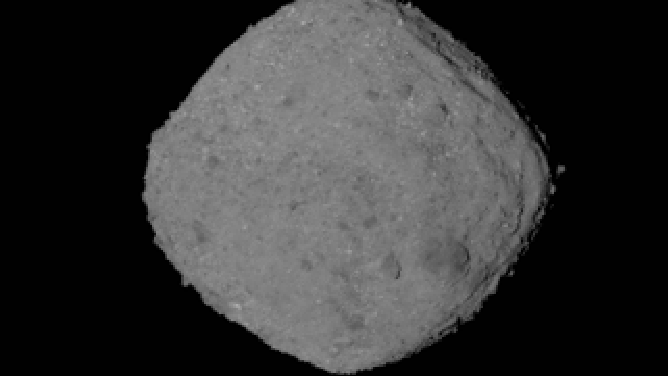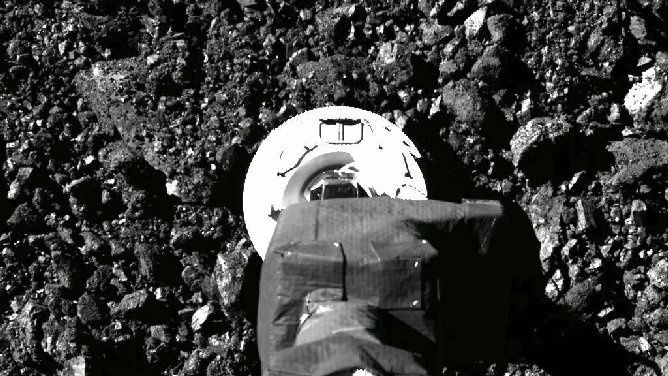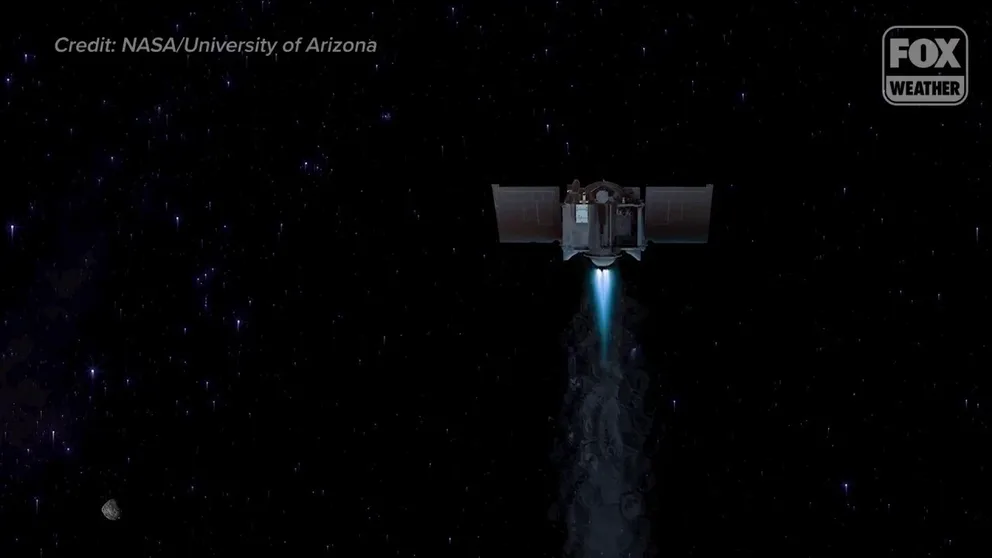NASA prepares for return of asteroid sample with September landing in Utah
As NASA’s OSIRIS-REx spacecraft flies by Earth, it will deliver a sample from the asteroid Bennu. After blasting through Earth’s atmosphere the capsule will be collected by the recovery team from the landing site about 80 miles southwest of Salt Lake City.

This set of images shows the asteroid Bennu rotating for one full revolution. Over a 4-hour and 11-minute period on Nov. 2, the PolyCam camera on NASA’s OSIRIS-REx spacecraft acquired a 2.5-millisecond image for every 10 degrees of the asteroid’s rotation. (Image: NASA/Goddard/University of Arizona)
(NASA/Goddard/University of Arizona)
NASA’s first spacecraft to collect a sample from an asteroid will complete its 7-year mission later this year when OSIRIS-REx drops off some of asteroid Bennu in Utah.
OSIRIS-REx – a fancy acronym for Origins Spectral Interpretation Resource Identification Security Regolith Explorer – collected an estimated 2 pounds of asteroid rocks and dirt known as regolith in 2020.
Before the spacecraft used its pogo-stick-like arm to vacuum up regolith, it first took two years of spaceflight to catch up with the asteroid and then orbited the small world, mapping its surface.
'LOSS OF SIGNAL:' NASA SUCCESSFULLY CRASHES DART SPACECRAFT INTO ASTEROID FOR PLANETARY DEFENSE
In September, OSIRIS-REx will deploy a small capsule with Bennu dirt inside, setting it on a trajectory for Earth. The capsule will hopefully land on Sept. 24 with the help of a parachute in Utah.
The landing zone is within a 250-square-mile area at the Department of Defense’s Utah Test and Training Range. The remote area near the U.S. Army’s Dugway Proving Ground was founded after the Pearl Harbor attack.
As the sample return date nears, the team has been rehearsing procedures to collect and protect the sample from contaminants. In August, a helicopter will drop a replica of the return capsule in the middle of the landing zone about the size of Rhode Island. The OSIRIS-REx mission team will use tracking cameras and radar to practice recovery operations during this dress rehearsal.
What happens to the asteroid sample?

Captured on Oct. 20 during the OSIRIS-REx mission’s Touch-And-Go (TAG) sample collection event, this series of 2 images shows the SamCam imager’s field of view at the moment before and after the NASA spacecraft touched down on asteroid Bennu’s surface. The sampling event brought the spacecraft all the way down to sample site Nightingale, and the team on Earth received confirmation of successful touchdown at 6:08 pm EDT. (Credit: NASA/Goddard/University of Arizona)
When the real thing happens, the capsule will be collected with every effort to maintain a pristine sample and won't be opened until it's brought to NASA's Johnson Space Center in Houston.
Lockheed Martin built and operates the spacecraft for NASA and is responsible for the capsule recovery.
On opening day, a Lockheed employee will have the honor of opening the capsule lid.
Asteroids are essentially fossils of our solar system, and scientists believe Bennu contains material that may date back to the formation of our solar system. The sample will be analyzed to learn more about how we got here and how Earth could deflect a potentially-hazardous asteroid like Bennu when that becomes necessary.
NASA will also share some of the sample with JAXA, the Japanese Aerospace Exploration Agency. Japan became the first nation to collect a sample from an asteroid.
More than 13 years ago, JAXA's Hayabusa spacecraft collected a sample from asteroid Itokawa and then two years ago, Hayabusa collected and returned a sample from another asteroid called Ryugu.
What will OSIRIS-REx do after the asteroid sample is returned?
NASA asteroid spacecraft gets a second mission
NASA's OSIRIS-REx spacecraft got approved for a second mission to study asteroid Apophis when it makes a close flyby of Earth in 2029.
After the drop-off, OSIRIS-Rex will begin a new mission to study near-Earth asteroid Apophis. On the next leg of its journey, the spacecraft will be called OSIRIS-APEX with a new principal investigator, University of Arizona planetary science professor Daniella DellaGiustina.
Instead of chasing down an asteroid and collecting a sample, this time, OSIRIS-APEX will wait for its subject. Asteroid Apophis is set to make a close flyby of Earth in 2029, close enough to see it with the naked eye.
EVERYTHING SCIENTISTS WOULD WANT TO KNOW IF AN ASTEROID WAS HEADING TOWARD EARTH
The OSIRIS-Rex mission holds the Guinness Book of World Records for the smallest object orbited, but Apophis is smaller than asteroid Bennu. It will be a new challenge in spacecraft navigation.
